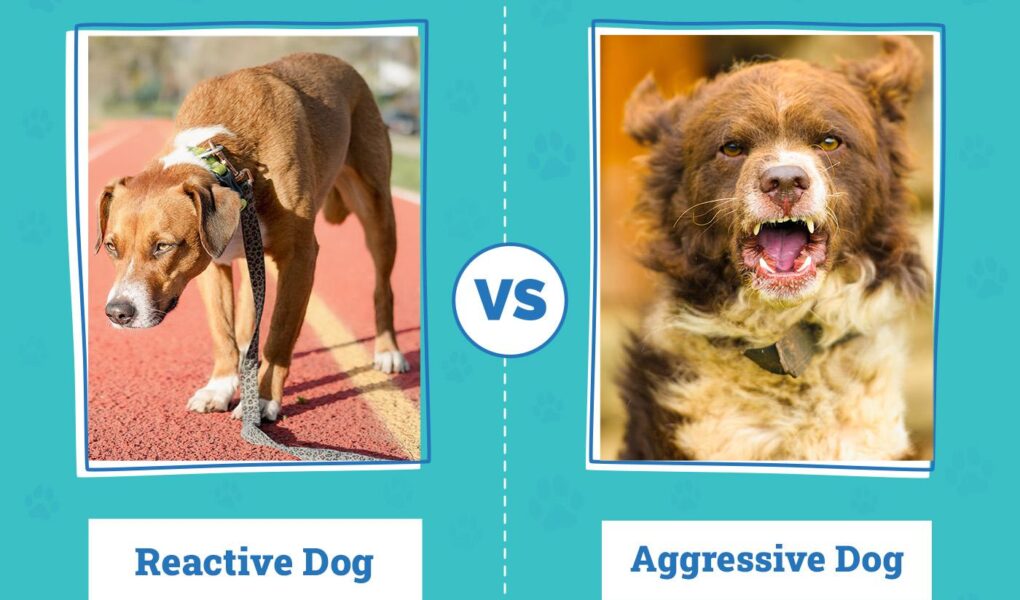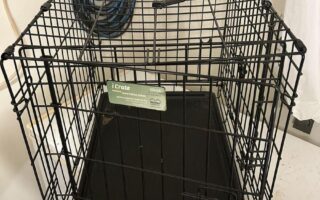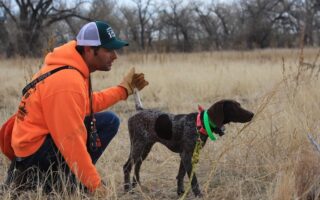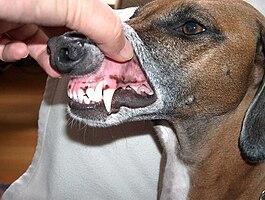Title: Understanding Dog Reactivity: Navigating the World with a Dog on Edge
In the vibrant tapestry of canine relationships, not all threads weave together seamlessly. For some dogs, encounters with their fellow canines can spiral into a frantic dance of barks, growls, and tense postures—a phenomenon known as dog reactivity. This behavior, often misunderstood, can arise from a complex interplay of fear, frustration, or even past experiences. While a reactive dog may seem like a daunting challenge, unraveling the reasons behind their behavior can illuminate a path to a more harmonious existence. In this article, we will explore the intricacies of dog reactivity, providing insights into its causes, the emotional landscape of your furry companion, and effective strategies for fostering calmer interactions. By equipping ourselves with knowledge and patience, we can transform the experience of walking a reactive dog from a source of anxiety into an opportunity for growth and understanding.
Table of Contents
- Understanding the Roots of Dog Reactivity Towards Other Dogs
- The Impact of Environment and Socialization on Reactive Behavior
- Effective Training Techniques to Manage Reactivity in Dogs
- Creating a Safe and Positive Space for Your Reactive Dog
- Q&A
- Insights and Conclusions
Understanding the Roots of Dog Reactivity Towards Other Dogs
Dog reactivity often stems from a complex web of emotions and experiences. Fear, frustration, and excitement are common triggers that can lead to a reactive response when a dog encounters another canine. Understanding the individual dog’s background can shed light on their behavior. For instance, a dog with a history of negative encounters with other dogs may develop a protective reaction. Additionally, genetics can play a significant role in temperament; some breeds are naturally more predisposed to reactivity due to their instinctual drives.
The environment in which a dog is raised also contributes significantly to their social behavior. A lack of proper socialization during critical developmental phases can lead to a dog feeling overwhelmed or threatened by the presence of other dogs. Here are some factors that can influence reactivity:
- Early Experiences: Positive or negative interactions with other dogs during crucial growth periods.
- Genetic Predisposition: Traits inherited from parents that may affect how a dog responds to social situations.
- Owner Behavior: The handler’s reactions can reinforce a dog’s fear or aggression, creating a cycle of reactivity.
- Health Issues: Pain or discomfort from underlying health conditions may aggravate reactivity towards other dogs.
The Impact of Environment and Socialization on Reactive Behavior
Understanding the nuances of a dog’s environment and socialization is crucial in addressing reactive behavior, especially toward other dogs. Every pup is a product of its surroundings, and factors such as early experiences, ongoing interactions, and day-to-day stimuli can play pivotal roles in shaping their responses. Dogs exposed to positive interactions during their formative months are less likely to exhibit reactive behaviors. On the contrary, those that face negative encounters or insufficient social stimuli can develop anxiety or aggression in the presence of other dogs. Consider the following elements that can influence a dog’s reactions:
- Health Factors: Pain or discomfort may lead a dog to react defensively.
- Previous Experiences: Traumatic interactions can create lasting associations.
- Owner’s Behavior: A nervous owner can transfer anxiety to the dog.
- Social Enrichment: Regular, controlled encounters with other dogs can promote confidence.
Environmental conditions also play a significant role in how a dog reacts. For instance, a bustling park with unfamiliar dogs can be overwhelming, leading to a heightened state of alertness or aggression. Alternatively, a calm, controlled setting can foster positive interactions and learning. Socialization should occur in a variety of environments to help dogs get accustomed to different situations. The following table summarizes key environmental factors that contribute to a dog’s reactive behavior:
| Factor | Description |
|---|---|
| Noise Levels | High noise can increase anxiety, affecting reactions. |
| Space | A crowded area may enhance feelings of threat. |
| Familiarity | Known environments can reduce stress and increase comfort. |
| Leash Tension | A tight leash can signal to the dog that there is a threat. |
Effective Training Techniques to Manage Reactivity in Dogs
One of the most effective ways to manage reactivity in dogs is through desensitization and counter-conditioning. This technique involves gradually exposing your dog to the stimulus that provokes a reaction—like other dogs—at a distance where your dog feels safe. Start with short sessions, rewarding calm behavior with treats or praise. Over time, decrease the distance and increase the duration of exposure while maintaining a positive experience. Key elements include:
- Finding a safe distance where your dog remains calm.
- Using high-value treats to reinforce positive behavior.
- Practicing in various environments to enhance generalization.
Another valuable method is implementing focus exercises. Teaching your dog to focus on you instead of the trigger can be a game-changer. Begin in a controlled environment with minimal distractions, using commands like “look” or “watch me.” Once your dog reliably focuses on you, gradually introduce distractions, ensuring to reward them for maintaining focus. This helps build impulse control and strengthens your bond. Important points include:
- Starting with simple commands before adding distractions.
- Encouraging calmness during training sessions.
- Incorporating play as a reward to keep training enjoyable.
Creating a Safe and Positive Space for Your Reactive Dog
Creating an environment that is both safe and uplifting for your reactive dog involves understanding their triggers and managing their surroundings effectively. Begin by identifying cues from other dogs that may cause fear or agitation. Taking proactive steps can significantly reduce stress for your dog. Consider implementing the following strategies:
- Designated Safe Spaces: Allow your dog to explore areas where they feel comfortable without encountering other dogs. This could be your backyard or a quiet area in your home.
- Dog-Free Zones: Establish areas where dogs are not allowed, ensuring your reactive dog can enjoy their space without unexpected interactions.
- Controlled Exposure: Gradually introduce your dog to other canines in controlled settings, always monitoring their body language for signs of discomfort.
Utilizing training tools can further enhance the creation of a positive space. A secure harness, long leash, or training collar can provide added control during walks. Consider collaborating with a professional dog trainer who specializes in reactive behaviors. Consistent, positive reinforcement will make a significant difference in your dog’s emotional well-being. Below is a simple guide to effective tools to include in your training toolkit:
| Training Tool | Purpose |
|---|---|
| Secure Harness | Prevents escape and offers comfort |
| Long Leash | Provides distance while allowing exploration |
| Positive Reinforcement Treats | Encourages good behavior and calmness |
Q&A
Q&A: Understanding and Managing Dog Reactivity to Other Dogs
Q1: What does it mean when a dog is reactive to other dogs?
A1: Dog reactivity refers to a dog’s emotional response to other dogs, which may manifest as barking, lunging, growling, or even freezing. This behavior can stem from various reasons, including fear, anxiety, territorial instincts, or lack of socialization. A reactive dog may not necessarily be aggressive; rather, they often express their discomfort or excitement in a way that can seem overwhelming to their owners and other dogs.
Q2: What causes dog reactivity?
A2: Reactivity can arise from a combination of genetics, early experiences, and environmental factors. A dog that has had negative experiences with other dogs, such as being attacked or poorly socialized, may become reactive as a defensive mechanism. Additionally, certain breeds are more predisposed to being protective or territorial, which can contribute to reactivity.
Q3: How can I identify if my dog is reactive?
A3: Signs of reactivity can vary but often include excessive barking, growling, or lunging when encountering other dogs. A reactive dog may also show signs of stress, such as panting, pacing, or tail tucking. Observing your dog’s body language and assessing their comfort level around other dogs is key; signs of discomfort include stiff body posture or avoiding eye contact.
Q4: What should I do if my dog reacts negatively to other dogs during walks?
A4: If your dog reacts negatively, the first step is to ensure their safety and the safety of others. You might want to create distance from the other dog or cross the street. Gradually desensitize your dog by exposing them to other dogs from a distance where they feel comfortable. Reward calm behavior with treats or praise.
Q5: Is training effective in managing a dog’s reactivity?
A5: Yes, training can be highly effective in managing reactivity. Positive reinforcement techniques, such as rewarding desired behaviors, can help reshape your dog’s response to other dogs. Working with a professional dog trainer or behaviorist who specializes in reactivity can provide tailored strategies suited to your dog’s needs.
Q6: Can socialization help reduce reactivity?
A6: Absolutely! Controlled socialization experiences can significantly reduce reactivity over time. Gradual exposure to other dogs in a controlled environment, coupled with positive reinforcement, helps your dog learn to associate other dogs with positive experiences, building their confidence in social situations.
Q7: Are there any tools or strategies that can help manage a reactive dog?
A7: Various tools can assist in managing reactivity, including no-pull harnesses, head halters, and muzzles for safety during training. Additionally, using distraction techniques—like carrying toys or treats to redirect your dog’s focus—can keep their attention away from triggering situations. Consistent training and routines also create a sense of stability for your dog.
Q8: What should I do if my dog’s reactivity persists despite training?
A8: If your dog’s reactivity continues to be a challenge despite your efforts, consider consulting a veterinary behaviorist. They can conduct a comprehensive evaluation to identify underlying behavioral or medical issues and develop a specialized treatment plan that may include behavior modification techniques and, if necessary, medication.
Conclusion:
Understanding and managing dog reactivity to other dogs takes time, patience, and consistency. By recognizing the signs, employing effective training strategies, and seeking professional help when needed, you can help your furry friend lead a more relaxed and enjoyable life in a world filled with canine companions.
Insights and Conclusions
navigating the world with a dog that is reactive to other dogs can be a complex journey. It requires patience, understanding, and a proactive approach, both from the owner and their furry companion. As you embark on this path, remember that every bark, growl, and rigid stance is a conversation waiting to be understood. By investing time in training, socialization, and positive reinforcement, you can transform these challenging moments into opportunities for growth and connection.
As you cultivate a deeper bond with your pup, celebrate the victories – no matter how small – and remain steadfast in your commitment to their well-being. Your dog’s journey to becoming more comfortable in the presence of others is a testament to the strength of your partnership. With love, support, and a sprinkle of creativity, you can rewrite the narrative of reactivity into one of resilience and joyous exploration. Here’s to more peaceful walks, wagging tails, and the enriching adventures that await you both.



